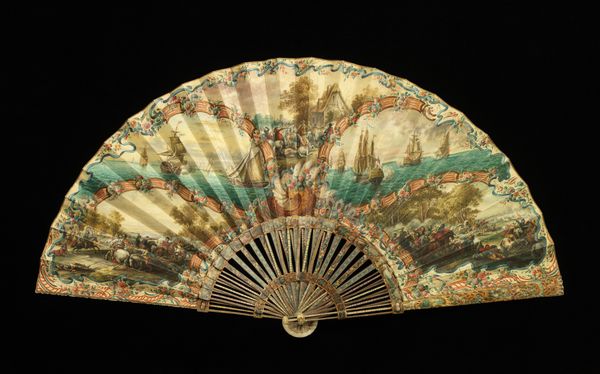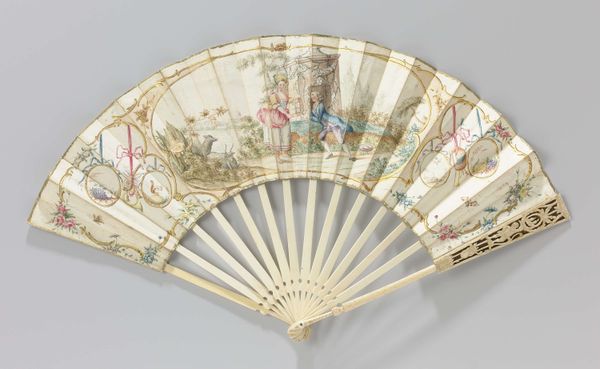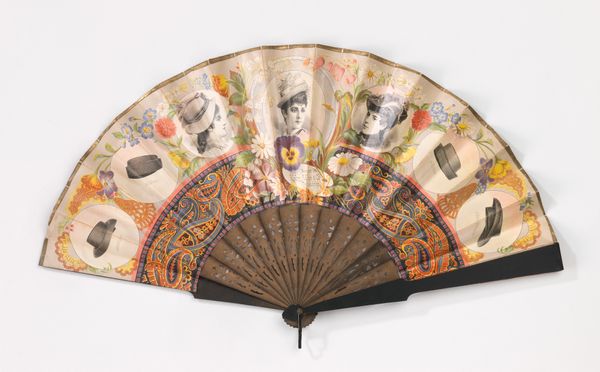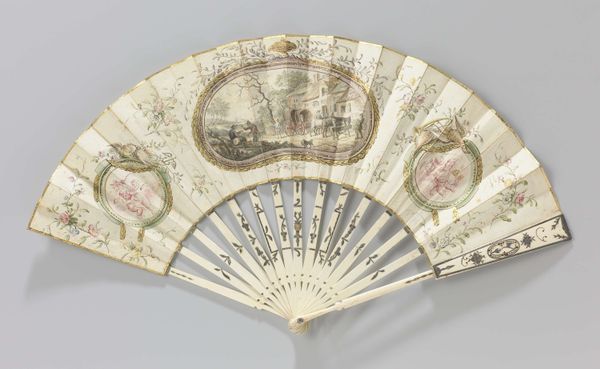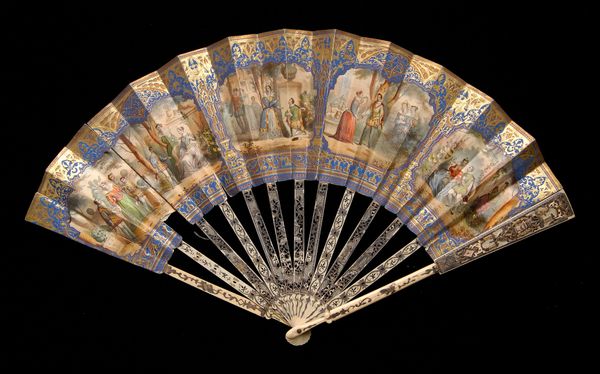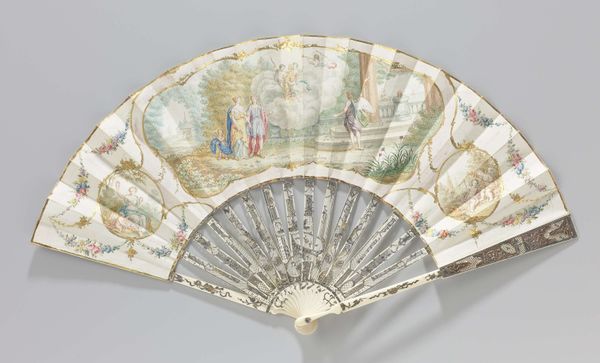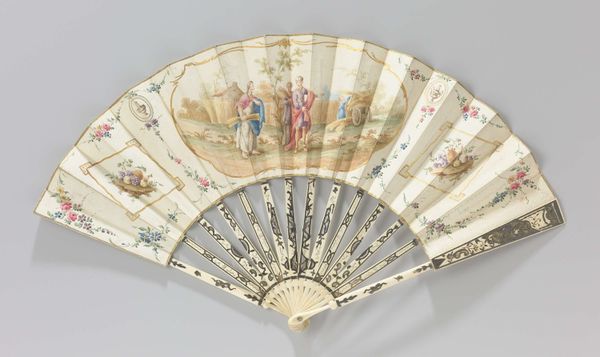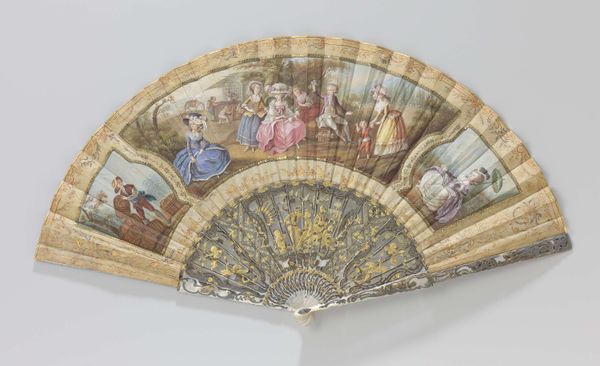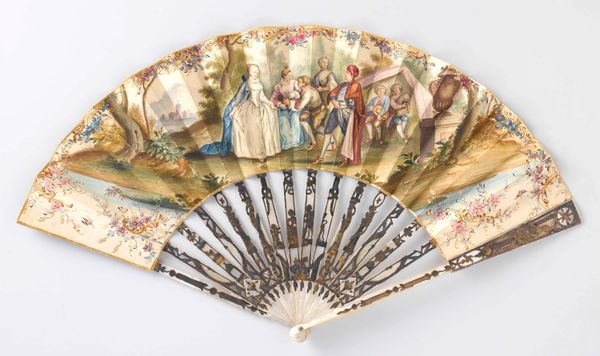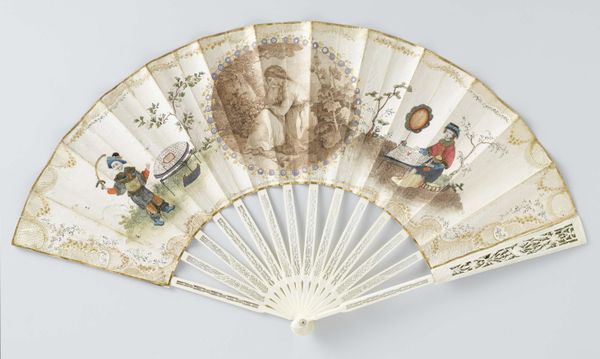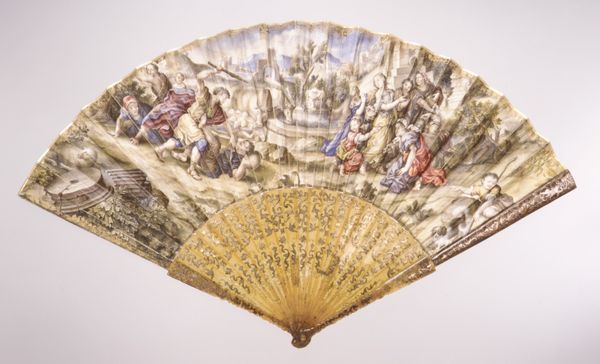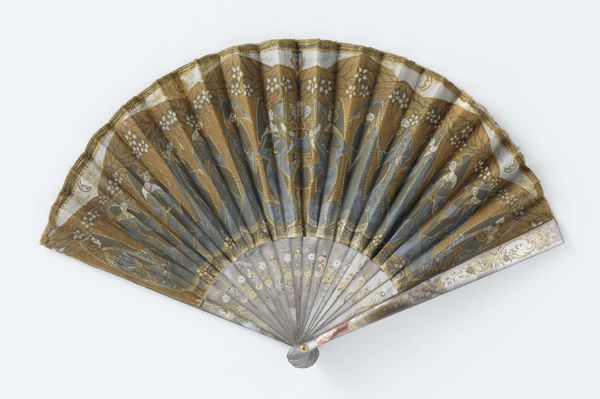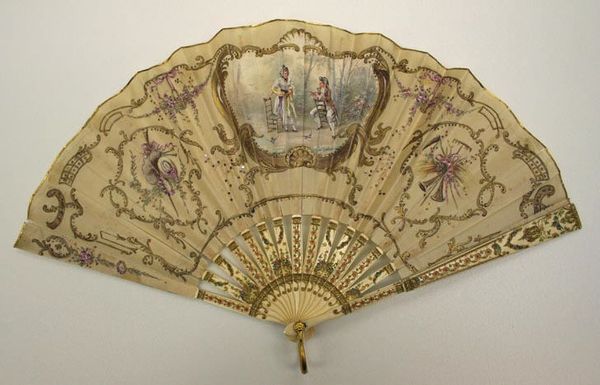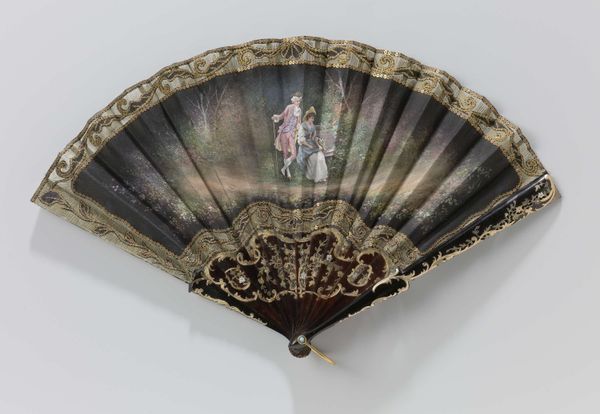
Vouwwaaier met dubbel blad van stof met op de voorzijde drie scènes, w.o. een ruiter op een wit paard, op de achterzijde bloemen en vogels op paars fond, montuur van gelakt hout c. 1840 - 1860
0:00
0:00
mixed-media, tempera, silk, painting, wood
#
mixed-media
#
decorative element
#
tempera
#
silk
#
painting
#
asian-art
#
landscape
#
figuration
#
wood
#
genre-painting
#
decorative-art
#
decorative art
#
miniature
Dimensions: span 52.5 cm, length 28 cm
Copyright: Rijks Museum: Open Domain
Editor: Here we have a fan from around 1840 to 1860, crafted from mixed media including silk, tempera, and wood, and the artist is listed as Jin Zemao. The detail is captivating, and I’m struck by the contrast between the lively scenes on the fabric and the more rigid structure of the lacquered wooden frame. How would you approach interpreting a piece like this? Curator: The work presents a complex interplay of forms and colors. Note how the arc of the fan dictates the composition; the artist segments the pictorial space into registers, using color to differentiate each tableau. Consider how the figures, rendered in miniature, are distributed across the surface. Do you see any visual hierarchy at play? Editor: Well, there’s definitely a sense of movement, like a story unfolding. The eye travels across the fan following the various scenes, but it seems constrained by the shape of the object itself. It's an unusual framing. Curator: Precisely. The fan’s shape becomes integral to the work’s meaning. Notice also the application of color. The vibrant hues – purples, greens, blues – define the scenes, each color creating a distinct atmosphere. How does the artist balance the contrasting styles between the upper and lower sections? Editor: It’s as if two separate artworks were combined. The painted scenes above are full of life, but the black lacquered wood below, decorated with gold figures, looks static and ornamental. The contrast adds visual complexity. Curator: Indeed, but consider also how the gold on the black lacquer echoes some of the brighter highlights in the painted scene. Are the elements in conflict or in dialogue? Also, let’s consider the physical nature of the piece as a handheld object, which leads to other possible levels of visual interest. Editor: That makes me think differently about it. By concentrating on these design elements, you uncover details I initially missed. Now, the whole piece feels more coherent. Curator: A close visual analysis, focused on line, color, and form, allows us to access deeper meaning within the work. I am now interested to consider the narrative sequencing suggested in this unusual piece.
Comments
No comments
Be the first to comment and join the conversation on the ultimate creative platform.
